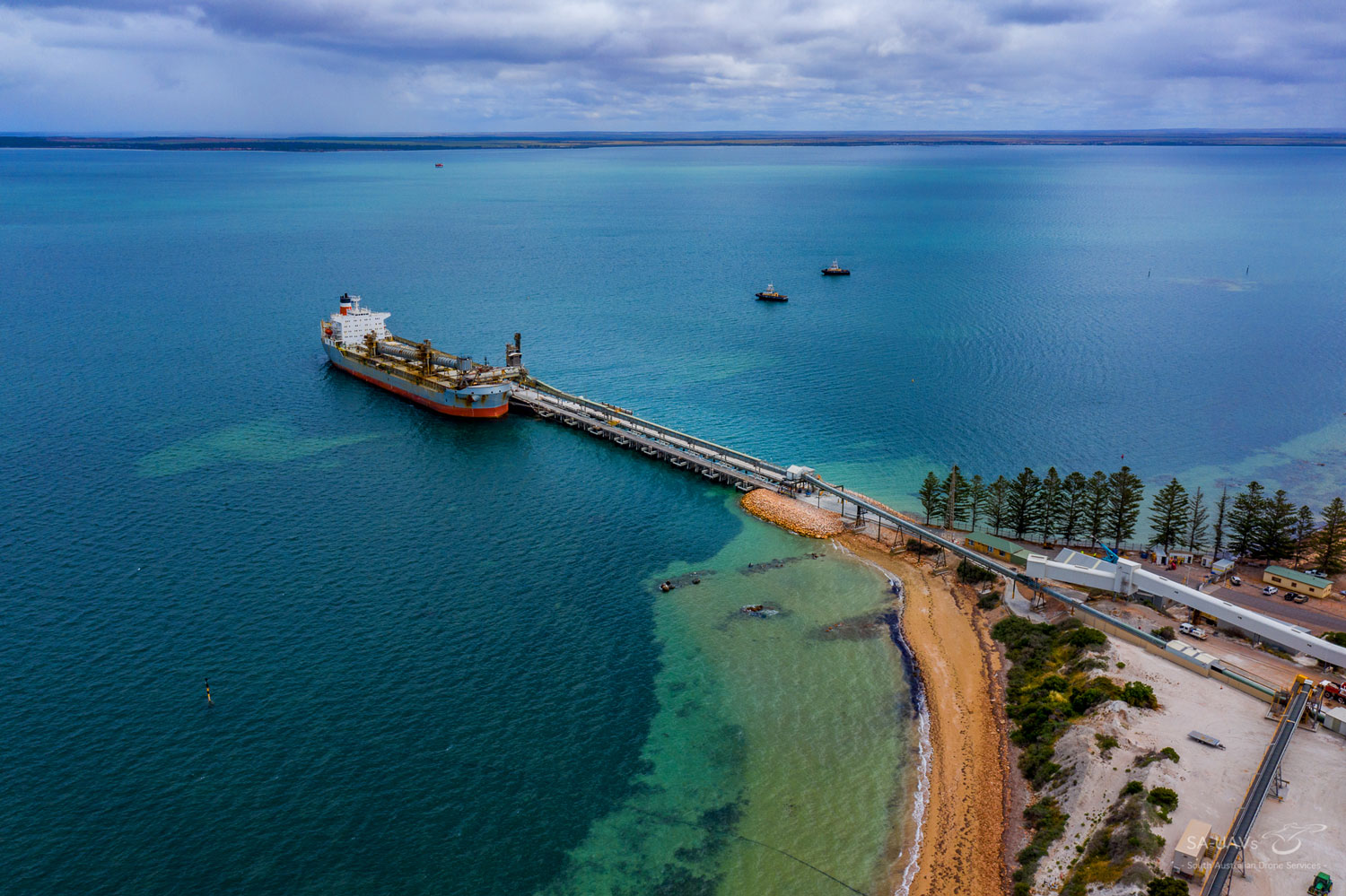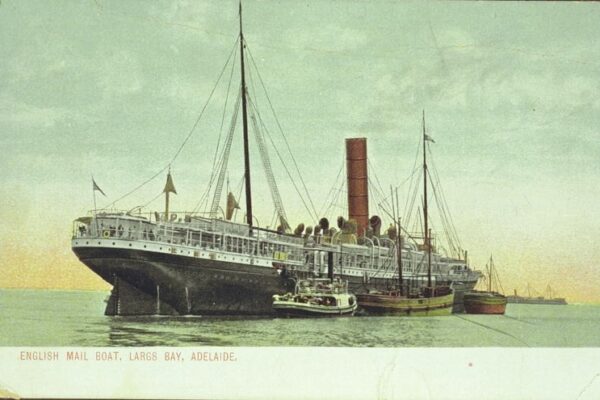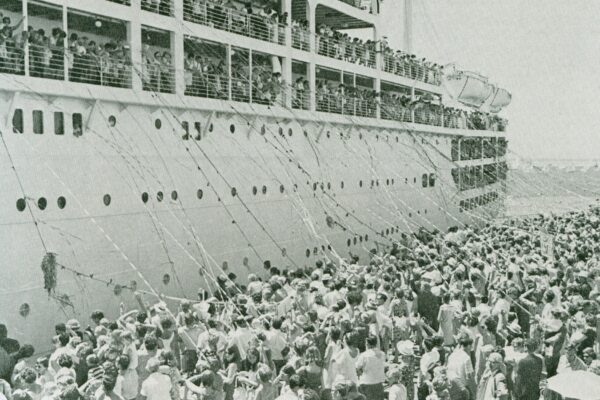Originally published in the December 1989 issue of Harbour Talk, this informative article about the history of shipping at Port Adelaide was written by Neil Cormack.
The shipping trade between Port Adelaide and Great Britain commenced in earnest during the 1840’s.
There were three original companies involved, The Orient Line, A.L. Elder & Co., and Messrs. Devitt and Moore. Their ships were based in London and brought passengers and general cargo, usually returning to London with passengers and laden with wool.
The Orient Line eventually ‘went into steam’ and became the Orient Steam Navigation Co.
A.L. Elder & Co. was the forerunner of the South Australian firm of Elder Smith & Co. (now part of the Elders IXL Group).
Devitt and Moore kept their sailing ships and diverted them to ‘tramping’ around the world, or operating them as cargo cum cadet ships. The cadets eventually found employment with all three companies as officers.
The Orient Line soon built up a sizeable fleet of passenger steamers which enabled them to maintain a strict schedule in the trade.
At first they began to use Holdfast Bay, the passengers and mail being ferried ashore to Glenelg by small steamers. But there were days when the inclement weather made this impossible.
So in 1889 the Largs Bay Land & Investment Co. was formed. This company built in record time the Largs Jetty, the Pier Hotel, a block of shops, and several houses for their staff. They also built the railway line from Glanville and down on to the jetty. This was broad gauge double track onto the jetty. At the seaward end of the jetty this track was four wide and accommodated two berths. The berths were to accommodate the lighters bringing the cargo and mail ashore.
This proved much better than Holdfast Bay. The ships now lay in Semaphore Anchorage in Largs Bay and were afforded some protection from the prevailing sou-westerly wind under the lee of the Wonga Shoal.
Although this Largs Bay position was a great improvement on Holdfast Bay it was still not quite satisfactory and after a period of twenty years or so the South Australian Government commenced the building of Outer Harbor.
As a harbor it was opened in 1908 and was a huge success.
By now several other companies had entered in the U.K. – Australia mail and passenger trade. Beside the Orient Steam Navigation Co. there were the P & O Line, the White Star Line and The Blue Funnel Line. Then after the first world war the Australian Commonwealth Line.
Between the two world wars a regular service was in operation. Every Thursday morning a ship would arrive outward bound from London and every Saturday morning a ship would arrive homeward bound to London.
These ships would sail in the late afternoon and a colourful experience it was indeed. There would be musicians on the quay and even performing dogs. Then as the ship sailed, hundreds of streamers would appear between passengers on the ship and friends on the wharf. And as the streamers became longer and longer and finally parted the high pitched sound of ‘cooee’ ‘cooee’ would drift across the water until the ship moved out of earshot.
With the advent of the 1939 war the service became spasmodic and then disappeared altogether. It never really returned.

![11222374_804931869628157_79273512149059358_o[1] 11222374_804931869628157_79273512149059358_o[1]](https://www.flindersportholdings.com.au/wp-content/uploads/2023/05/11222374_804931869628157_79273512149059358_o1-600x400.jpg)
![12118799_10207928976330979_7557562230577049584_n[1] 12118799_10207928976330979_7557562230577049584_n[1]](https://www.flindersportholdings.com.au/wp-content/uploads/2023/05/12118799_10207928976330979_7557562230577049584_n1-600x400.jpg)

